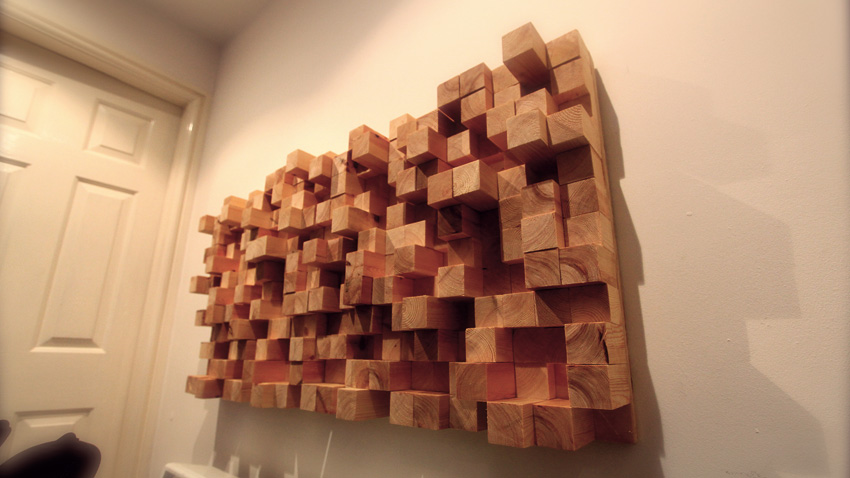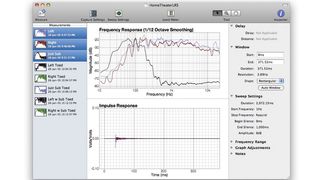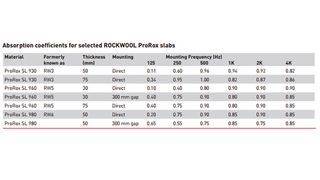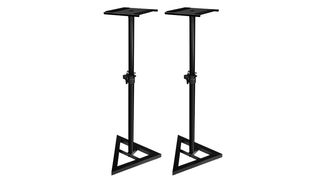13 ways to improve your home studio's acoustics and make it sound better
Don't ignore the most important part of your music-making environment: the room

Slick studio monitor speakers? Check. Shiny new computer? Check. More plugins than you could ever dream of using? Check. We're all set to go, right? Hold your horses! We've left out the most important part of the equation: the room.
Dropping dough on some serious speakers but neglecting the room is like sticking a V8 engine in a Mini: you're only going to be as strong as your weakest link. It doesn't matter how accurate your speakers are - if you're in an untreated room, it's a near certainty that their performance is being hampered.
Room treatment is probably the most neglected aspect when it comes to setting up a home studio. Investing in acoustic foam may not be as sexy as buying that new killer synth, but it'll get you the biggest bang for your buck in terms of sonic improvements.
These 13 tips will help you make the right decisions when it comes to investing in and building acoustic treatment systems for your room.
1. Lost in science
As usual, there's a lot of information available on the internet. Just remember that acoustics is a science, and as such, there are some very deep and involved texts out there, and a huge number of people who want to come across as being cleverer than you. Rely on measurement software rather than equations and jargon - you're building a decent studio, not a state-of-the-art acoustics laboratory!
2. Fabricating panels
Fabric is surprisingly expensive and can easily be your biggest expenditure in making sound absorbers. It's tempting to cheap out here, but bad fabric just looks… bad. Ring around your local fabric suppliers and see if they have any quality end-of-line stock you can snap up for a bargain.

3. Take measurement seriously
When you're planning to take room sound measurements, blasting pink noise and looking at the result of the mic input on a spectrum analyser in your DAW is not a good substitute for proper measurement software. If you're going to all that effort, there's no reason to not do a proper job, especially when software like REQ Wizard is free.
Get the MusicRadar Newsletter
Want all the hottest music and gear news, reviews, deals, features and more, direct to your inbox? Sign up here.
4. Seek the professionals
If you don't have the time or inclination to build your own traps and panels, check out companies like RealTraps and GIK Acoustics. They're a friendly bunch who will throw in a consultation to hammer out a treatment plan that works best for your specific room and budget.
5. Building by videos
Check out YouTube for videos detailing how to build your own bass traps and early reflector panels. The concept is quite simple, but if you're shy with the DIY, then any new angle you can get on how to tackle the challenge will only help.
6. Avoid flimsy foam
Beware of foam suppliers selling cheap acoustic foam. There's no way of verifying if they are up to scratch in terms of performance so it's usually better to spend a little extra with specialist companies, such as Auralex, who have a proven track record of delivering the goods.
7. Acoustic philosophy
Take this axiom to heart: "In acoustics, if something seems intuitive, it's probably wrong". Acoustics is a deep and complex topic, and not something that should be taken on a hunch. There's a wealth of great resources on the web, for example), so don't be shy about asking questions and make sure to do the necessary background reading.
8. Other resources
The key players in acoustic treatment often have a wealth of resources on their websites to aid the novice in their first foray into acoustics. These guides are aimed at the beginner, so the important take-homes are laid out in plain English in an easy to understand manner.
9. Soft solutions
Software-based systems like IK Multimedia's ARC System 2 can compensate for acoustic deficiencies. However, don't think of these as a replacement for acoustic treatment - they're not. They can, however, aid in achieving that "last 5%" of sonic purity in an otherwise well-treated room, or simply help to make the best of a situation where full-on acoustic treatment is not possible.

10. Get the specs
Mineral wool suppliers usually publish the Sound Absorption Coefficient specs for their brands. These are often found on the manufacturers' websites and detail how well a given product performs at absorbing energy at various points across the frequency spectrum. Basically, an absorption coefficient is a measure of how much sound is absorbed by the material - between 0 (no sound absorbed) and 1 (complete absorption). You can use sound absorption coefficients to get an idea of whether certain materials are right for certain tasks. They can also give you a clue as to what materials you can use together to increase your absorption across the entire frequency spectrum.
11. Playing it by ear
If you really can't get your hands on an omni mic to take room measurements, you'll have to do some educated guesswork. For small rooms (less than 1500 cubic feet), 'the more bass traps the better' is a sensible strategy.
12. Getting your minerals
Check out your local builder's merchant for killer deals on mineral wool. Often, they'll have a brand on offer, potentially enabling you to slash your costs by half or more. Be sure to take them up on their offer for delivery as you're in for a shock if you think you can fit more than a bale or two in the back of your hatchback.

13. Vertical adjustments
If you can afford solid speaker stands with adjustable height, it will open up, literally, a whole new dimension to experiment with speaker positioning. Just be sure you likewise grab an adjustable chair, so you can boost your listening position up or down to align your ears with the tweeters.
Computer Music magazine is the world’s best selling publication dedicated solely to making great music with your Mac or PC computer. Each issue it brings its lucky readers the best in cutting-edge tutorials, need-to-know, expert software reviews and even all the tools you actually need to make great music today, courtesy of our legendary CM Plugin Suite.

"A classic compressor for free on Valentine's Day – it must be love!": Universal Audio is giving away an 1176 plugin as a Valentine's gift - here's how to get it and use it

“A magical part is this sidechain with the bass”: Lady Gaga breaks down Disease in new studio video










